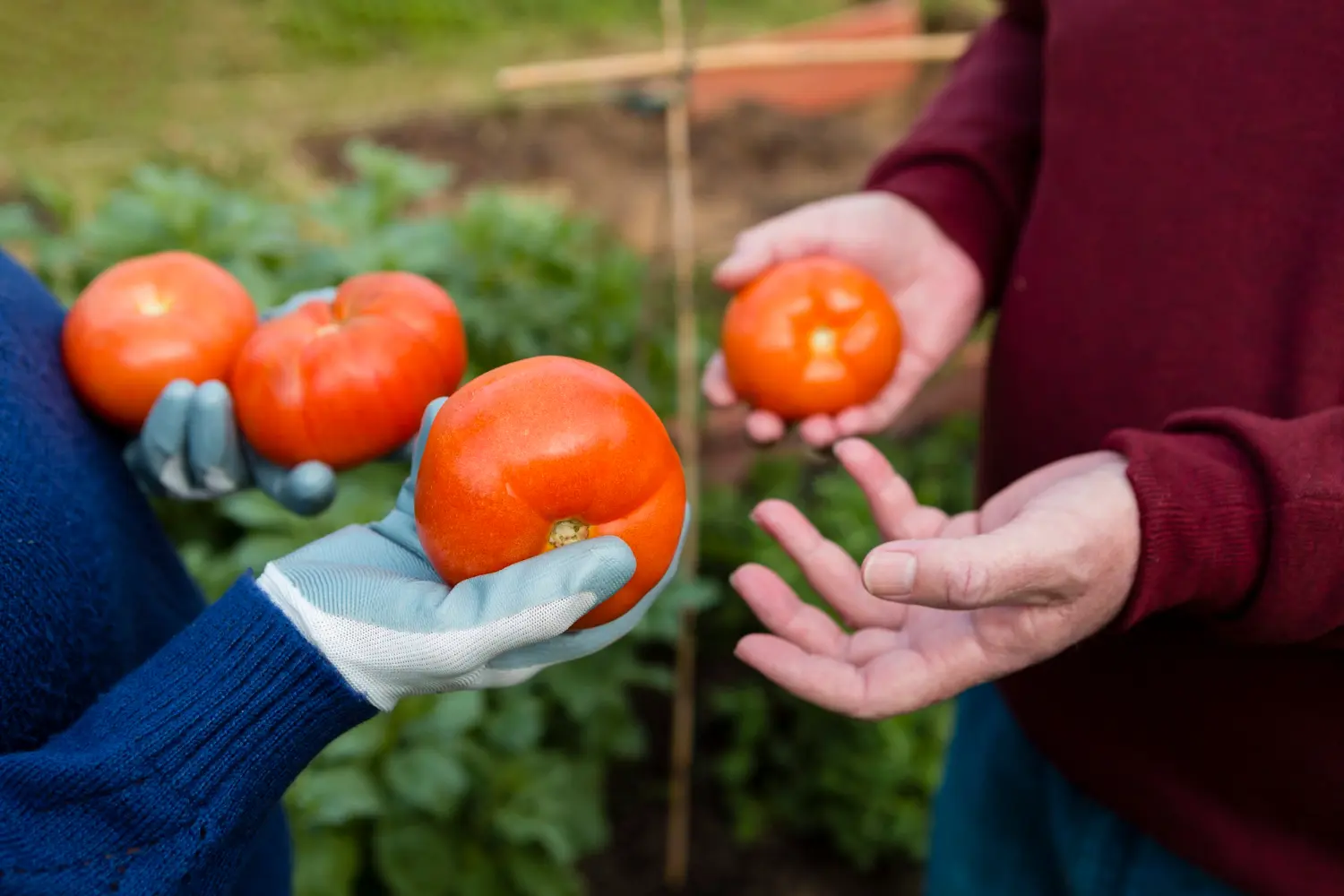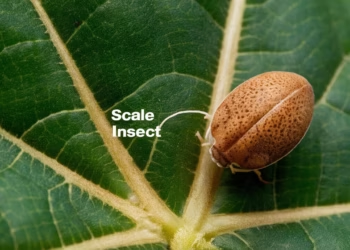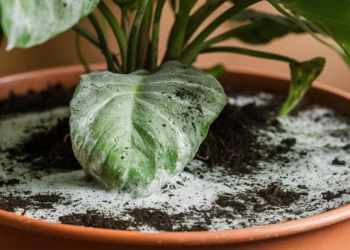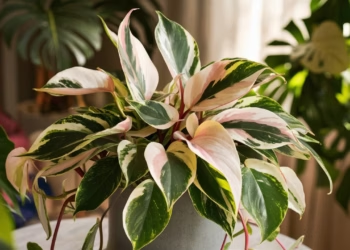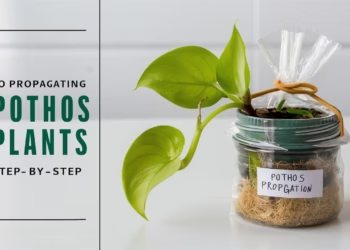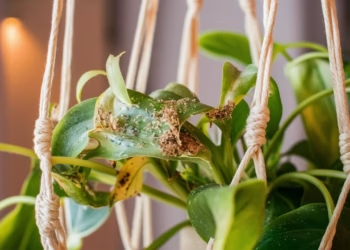There’s nothing quite like the satisfaction of harvesting your own juicy tomatoes from your house garden. Planting tomato seeds in your house garden is not just about producing delicious fruits but also a fulfilling hobby that connects you with nature. Whether you’re a seasoned gardener or a green-thumbed newbie, this guide will walk you through the entire process of growing tomatoes from seeds to mature plants, ensuring you get the best out of your gardening efforts. Let’s dive in and get those hands dirty!
Table Of Contents
Getting Started: Choosing the Right Tomato Seeds
Heirloom vs. Hybrid
First things first, you’ve got to pick the right seeds. Heirloom tomato seeds are perfect for those who love the idea of preserving historical varieties and enjoy rich flavors. They’re open-pollinated, meaning they’re naturally pollinated by wind, birds, or insects, which keeps their traits consistent. Hybrid seeds, on the other hand, are a cross between two different varieties and are bred for specific traits like disease resistance or higher yields.
Selecting Seed Types
When selecting tomato seeds, consider what you want from your plants:
- Cherry Tomatoes: Small, sweet, and perfect for salads.
- Roma Tomatoes: Great for sauces and canning.
- Beefsteak Tomatoes: Large, juicy, and ideal for sandwiches.
Planting Tomato Seeds in Your House Garden
Selecting the Site
Tomatoes thrive in full sun, requiring at least 6 hours of direct sunlight daily. Choose a location that is well-drained and has rich, fertile soil. If necessary, amend the soil with organic matter such as compost or aged manure to enhance its fertility and structure.
Preparing Your Seed Trays
Before you start planting tomato seeds in your house garden, you need to prepare your seed trays. Fill them with a quality seed-starting mix that’s light and drains well. This mix typically contains peat moss, perlite, and vermiculite.
Sowing the Seeds
Sow the seeds about 1/4 inch deep. Space them out to give each seedling enough room to grow. Lightly cover the seeds with soil and gently water them. Make sure the soil remains moist but not waterlogged.
Providing the Right Environment
Tomato seeds need warmth to germinate, ideally between 70-80°F (21-27°C). You can use a seedling heat mat to maintain consistent warmth. Once the seeds sprout, they’ll need plenty of light. A sunny windowsill might do, but grow lights ensure your seedlings get enough light to prevent them from getting leggy.

Growing Healthy Tomato Seedlings
Watering and Feeding
Keep the soil consistently moist. As the seedlings grow, they’ll need more water, but avoid waterlogging the soil. When the seedlings develop their first true leaves, start feeding them with a diluted, balanced fertilizer.
Transplanting Seedlings
When the seedlings have at least two sets of true leaves and the outdoor conditions are right, it’s time to transplant them. Gradually acclimate them to the outdoors in a process called hardening off. Over a week, gradually expose them to outdoor conditions to reduce transplant shock.
Planting Tomato Seedlings in the Garden
Crop Rotation
To prevent soil-borne diseases, practice crop rotation. Avoid planting tomatoes in the same spot where other members of the Solanaceae family (e.g., potatoes, eggplants, peppers) were grown in the previous year.
Preparing the Garden Bed
Choose a sunny spot in your garden. Tomatoes need at least 6-8 hours of direct sunlight daily. Prepare the soil by mixing in compost or well-rotted manure to enrich it. Tomatoes prefer slightly acidic to neutral soil (pH 6.0-7.0).
Planting Techniques
Plant your tomato seedlings deeper than they were in the pots-up to the first set of true leaves. This encourages a strong root system. Space them 18-24 inches apart, with rows 3-4 feet apart to allow good air circulation.
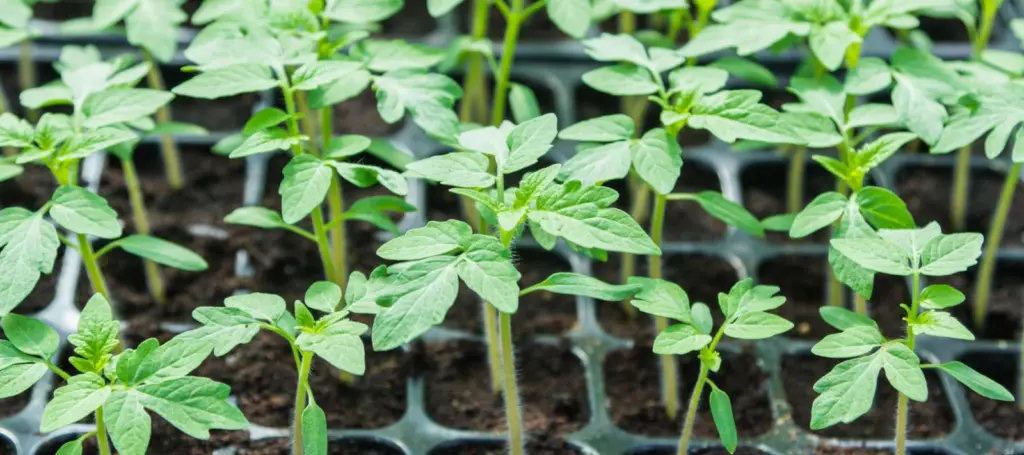
Caring for Your Tomato Plants
Watering and Mulching
Tomatoes love consistent moisture. Water them deeply and regularly, aiming for the base of the plants rather than the leaves. Mulch around the plants to retain moisture and suppress weeds.
Staking and Pruning
As tomato plants grow, they’ll need support. Use stakes, cages, or trellises to keep the plants upright. Prune the lower leaves to improve air circulation and reduce the risk of disease. Pinch off suckers (the small shoots that grow between the stem and a branch) to direct the plant’s energy towards fruit production.
Fertilizing and Disease Prevention
Feed your plants every 2-3 weeks with a balanced fertilizer. Keep an eye out for common pests like aphids, tomato hornworms, and diseases like blight. Regularly inspect your plants and use organic or chemical treatments as necessary. However, for an extra boost:
- Slow-release fertilizers: Apply when transplanting or when seedlings are 5-10cm tall.
- Liquid fertilizers: Apply during flowering and fruiting stages according to the product’s instructions.
Harvesting Tomatoes
Tomatoes are ready to harvest approximately 60 to 100 days after sowing. Harvest fruit when it starts to change color by cutting it from the vine with snips or twisting it off. Regular harvesting encourages more fruit production.
Storage
- Short-term: Store tomatoes at room temperature to continue ripening.
- Long-term: Tomatoes can be stored in the refrigerator to extend their shelf life or processed by freezing, canning, or drying.

Common Problems and Solutions
Tomato plants are susceptible to pests, diseases, and physiological disorders. Here are some common issues and their solutions:
Pests
- Aphids: Control with insecticidal soap or neem oil.
- Tomato Hornworms: Handpick and remove.
- Whiteflies: Use yellow sticky traps or insecticidal soap.
Diseases
- Blight: Practice crop rotation and use resistant varieties.
- Fusarium Wilt: Remove and destroy infected plants.
- Powdery Mildew: Apply fungicidal sprays and ensure good air circulation.
Physiological Disorders
- Blossom End Rot: Ensure consistent watering and adequate calcium levels in the soil.
- Cracking: Maintain even soil moisture and avoid heavy watering after a dry period.

Planting tomato seeds in your house garden is a rewarding journey that combines patience, care, and a bit of garden savvy. From selecting the right seeds and nurturing seedlings to transplanting and tending to mature plants, each step brings you closer to that first bite of homegrown tomato goodness. So, roll up your sleeves, get those seeds started, and look forward to a bountiful harvest. Happy gardening!
By following this guide on how to grow tomato seeds and plant and care for them, you’ll be well on your way to enjoying delicious, home-grown tomatoes straight from your house garden. Enjoy the process and the tasty results!
FAQs
What month is best to plant tomato seeds?
The best time to start tomato seeds indoors is about 6 to 8 weeks before the last expected frost date in your area. Generally, this means starting the seeds in late February to early March for many regions. In warmer southern regions, starting seeds in January or February can be appropriate .
How to start tomato plants from seeds?
- Container Preparation: Use small containers like yogurt cups, egg cartons, or seed starter trays with drainage holes.
- Seed-Starting Mix: Fill containers with a sterile seed-starting mix and moisten it.
- Sowing Seeds: Make shallow furrows about 1/4 inch deep in the mix, place the seeds, and cover them lightly with soil .
- Watering: Water gently to keep the soil moist but not waterlogged.
- Light and Warmth: Place containers in a warm location with plenty of light or under grow lights.
Should I soak tomato seeds before planting?
Soaking tomato seeds before planting is not necessary but can speed up the germination process. Soaking seeds in water helps to soften the seed coat, which can lead to faster and more vigorous germination .
Can I grow tomatoes from fresh seeds?
Yes, you can grow tomatoes from fresh seeds. Extract the seeds from a ripe tomato, rinse off the pulp, and allow them to dry thoroughly before planting. This method can be a fun way to propagate your favorite tomato varieties .
